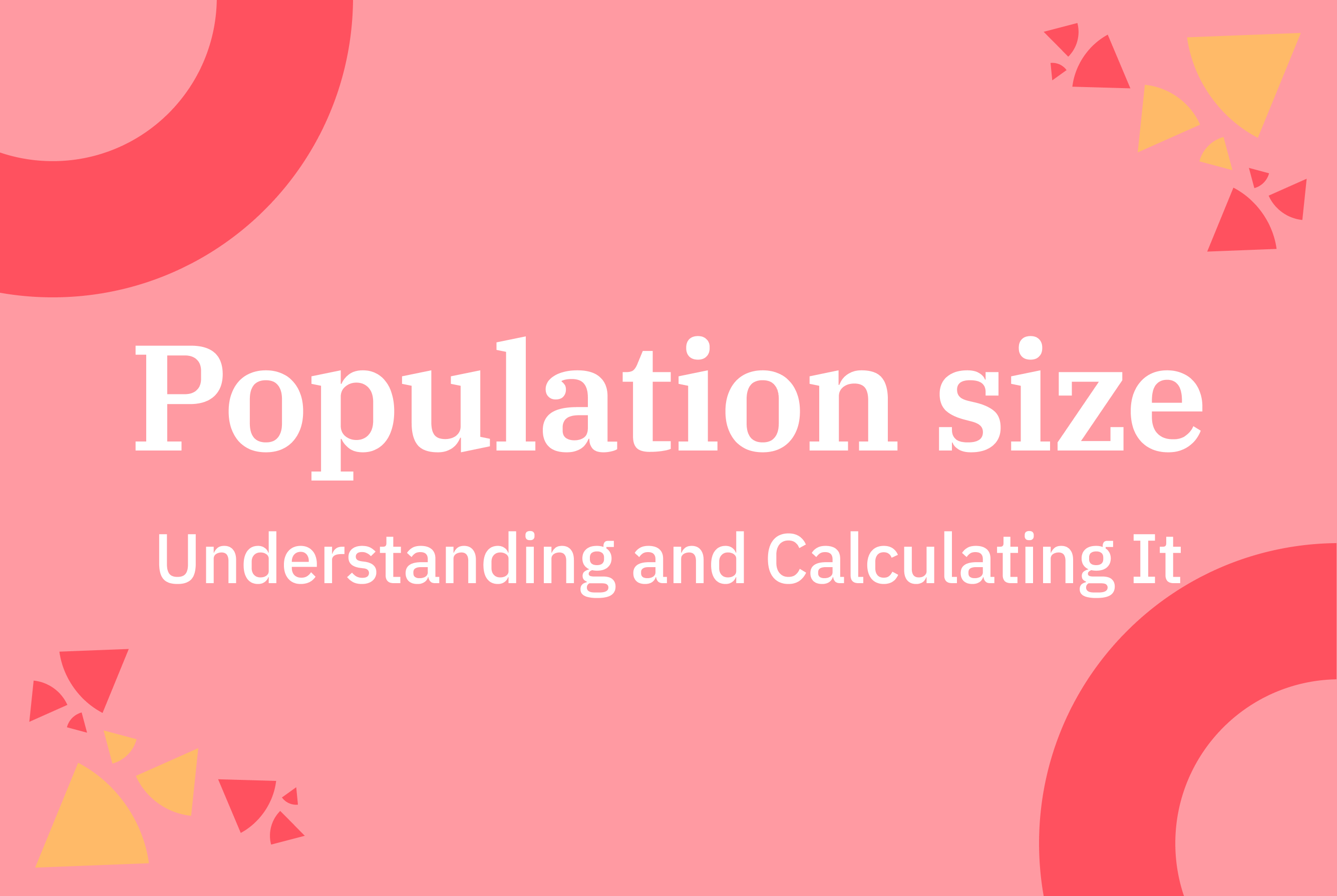Table content
Whether you’re conducting market research, surveying students for an academic project, or gathering opinions about a new community service, you’ll need to not only need to understand your sample size, but the population size as well. Knowing the difference between the two and how they impact your survey is imperative to deriving accurate and valid data.
When it comes to understanding population size, there are a few key concepts to keep in mind, from how to calculate it to applying it in real-world scenarios. Let’s dive in!
What is Population Size?
Population size refers to the total number of individuals a survey applies to and who could take part in your research. This differs from a sample size, which is the select number of people who participate in a survey and represent the population.
For example, if you’re a teacher looking to gain feedback on a course you’ve taught over the years, the population would be every single student who has taken the course, while the sample is a smaller group of that population. In a perfect scenario, the entire population would participate in a survey, ensuring the data is as comprehensive and accurate as possible – but often, that is not feasible. Even so, understanding population size is important if you decide to select a specific sample, to help ensure your data is representative of the population as accurately as possible.
Understanding the Population Size Symbol
To understand when population size is used in surveys and corresponding data, it’s usually represented by the symbol N. So if you see “N = 100,” it means the population size is 100 individuals.
Calculating Population Size
If you don’t already have the information regarding the population size and need it in order to calculate important criteria - such as margin of error and confidence level - there are ways to calculate this. You can either use a formula, or a population size calculator, a digital tool that can help simplify the process. To do this, you’ll need two pieces of information: the sample size (n) and the sampling proportion (p).
From there, you can use this formula to determine the population size: N = (n / p) * (1 / (1 - p)) 1. Determine the sample size (n).
2. Determine the sampling proportion (p).
3. Plug these values into the formula.
4. Solve for N, which represents the population size.
Real-World Impact of Population Size
Population size calculation has many real-life applications. For example, let’s say you’re a botanist studying a newly discovered species of lime trees (what else?). To estimate the population size of the trees in a given area, you could take a sample and use the population size calculator to get a sense of the total population size.
Or, perhaps you work as a public health for a federal government, and need to estimate the population size of a once rural region that has grown rapidly since the last official census, so that you can determine how many new doctors and nurses need to be employed to better serve the area. You could use the population of a town that is representative of the region as your sample so that you could calculate the estimated population size.
When conducting surveys, the population size is also a key metric for ensuring that a sample is large enough, and that both the margin of error and confidence levels are sound. These are critical components of valid and reliable data, as a sample size that is too small or too narrow can lead to biased results and flawed data.
The Importance of Population Size in Different Fields
Your population size will vary across different fields of research. Understanding the specific needs of your field can guide you in choosing the right sample size for your survey.
- Business: When determining customer satisfaction or product-market fit, knowing the population size will help you identify your ideal sample size. If you’re hoping to collect feedback about a specific product, for instance, the population size will be every customer that has purchased the project. From there, you can dig down into the demographics of your customer population to segment the audience and gain insights into customer feedback based on parameters such as age, gender, or location to better understand how satisfied they are with the product, or if there’s anything they think could be improved.
- Employee Engagement: Many companies today are investing in employee engagement, and need to gather truthful and comprehensive feedback from team members to understand how to better serve them. While using a sample of the population may be more manageable for large companies, startups or SMBs will likely want to survey the entire population of their workforce to gain accurate insights.
- Healthcare:Population sizes are crucial in the healthcare industry, where research and planning hinge on understanding how many people are affected by a certain disease or are in need of different types of care. Though sample sizes will likely be very necessary in clinical trials, and especially in research that targets a certain demographic, understanding the population size can help determine how research is conducted and trials are organised.
- University Research:Academic research occurs across a variety of fields, and though sample sizes are most often employed, the population size is still critical information, especially for disciplines like sociology, anthropology, biology, and psychology.
LimeSurvey, Delivering Fresh Surveys for All
Regardless of your field or area of study, LimeSurvey is a survey provider that intimately understands the importance of population size on results and data, offering tools such as calculators that can help you determine population size and ensure your sample size is optimized and will help you achieve your goals.
Built on an open-source framework, LimeSurvey can help you conduct comprehensive surveys that are effective, data compliant, customizable, and user-friendly, as well as compile, analyze, and export your findings, making it faster and easier to get the data, feedback, and information you need.




